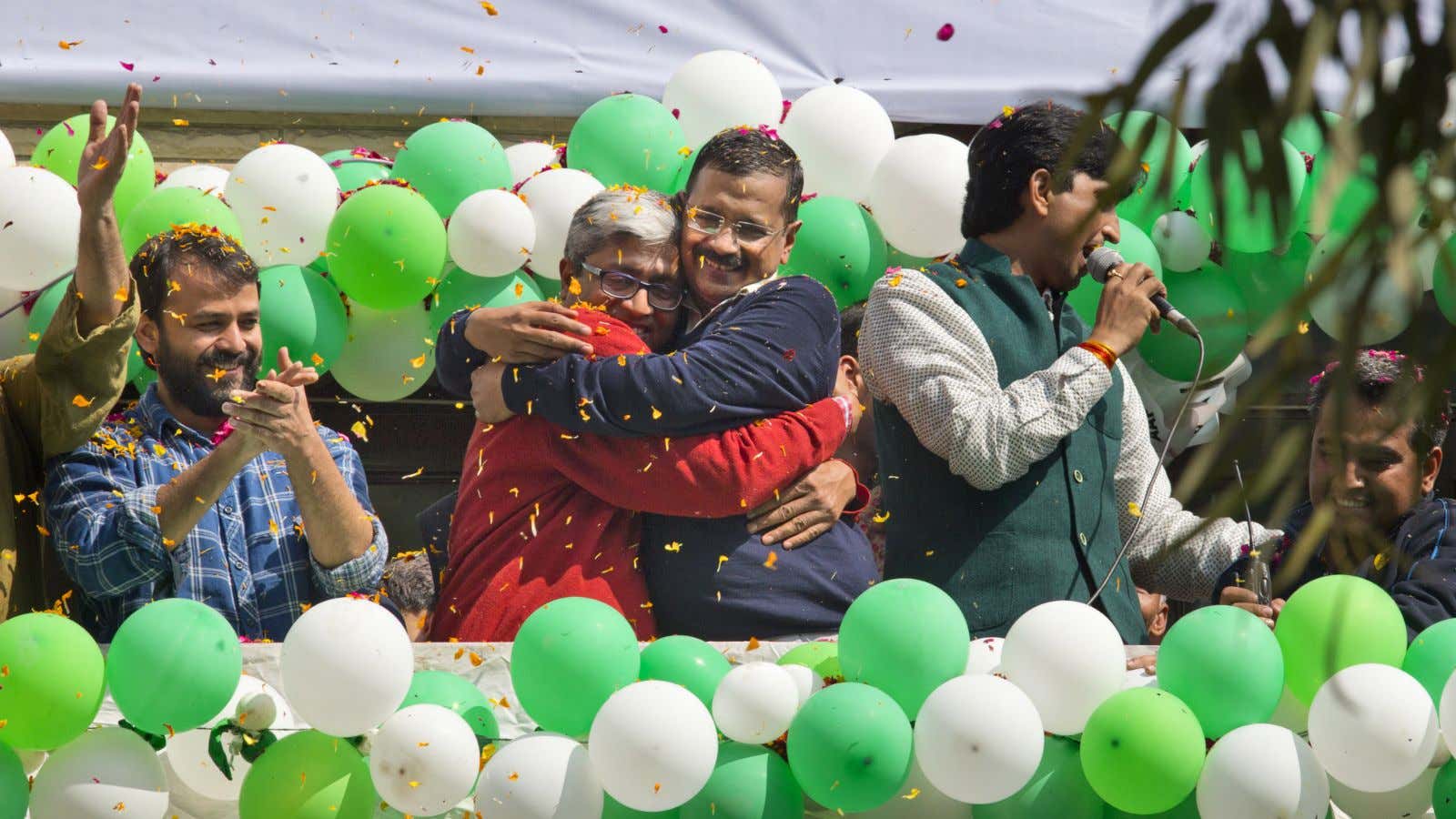Arvind Kejriwal is not only rewriting the rules of governance in India, but also rejecting the brahmachari way of life that most Indian politicians seem to revere.
Politicians in the world’s largest democracy have almost always projected themselves as phlegmatic, solitary individuals who selflessly devote their lives to serving the country. Even if they are married, their partners rarely make public appearances—and if they do (usually prompted by protocol), there is almost never any physical display of affection.
But when Aam Aadmi Party (AAP) leader Arvind Kejriwal embraced his wife in public, after his historic win on Tuesday, the country’s newest chief minister introduced Delhi to a new archetype of an Indian politician: one who has no qualms about sharing the limelight with his partner.
“This is my wife,” Kejriwal said after his victory, while affectionately putting his arms around his spouse Sunita Kejriwal, who greeted the supporters and journalists with folded hands. “She never appears in front of the public…Today, I have forced her to come here.”
Sunita is a government officer and keeps a low profile because of her job. The two met more than 20 years ago at the National Academy of Administration at Mussoorie during their training after both of them qualified for the Indian Revenue Service (IRS).
“I would have been incapable of all the hard work I have put in, had it not been for her support,” Kejriwal said.
And so, fittingly, the first pictures Kejriwal tweeted after his landslide win were that of the now famous hug.
While Kejriwal quit his day job to focus on his work as an activist and a politician, Sunita handled the family finances and other domestic responsibilities.
“She ensured that he had home-cooked food during the campaign as he’s a diabetic,” an AAP worker told The Economic Times. The family lives in an apartment allotted to Sunita by the Indian government.
Unpaid labour
Such a public celebration of a wife’s contribution in her husband’s success is far from the norm in India. And, it is not just politicians who fail to acknowledge the role played by their partners in their lives. It’s a far more pervasive phenomenon.
A woman’s labour is often unappreciated or taken for granted. On an average, Indian women spend 300 minutes more than men per day on unpaid work—the highest difference in the world, according to a report on gender by the World Economic Forum.
With this gesture, the AAP co-founder has endeared himself to millions of Delhi’s women—a crucial vote bank as nearly six million women voted in the capital last week.
The other hug
The Kejriwal hug is even more remarkable because last year India voted for a prime minister who for decades did not acknowledge the existence of his wife. Narendra Modi—and the face of the Bharatiya Janata Party’s campaign against Kejriwal—publicly disclosed his marriage for the first time while filing his election papers in April last year.
Such a disclosure barely dented Modi’s public image, because in Indian politics, the renunciation of marital life for public service is often not only encouraged but also revered.
Last month, Modi also embraced US president Barack Obama when he arrived (along with the US first lady) in New Delhi. Images of the hug were shared and re-tweeted across the world, its import discussed and dissected in countless newspaper newsrooms and TV studios.
But the Kejriwal hug is just as important. With that one embrace, the next chief minister of Delhi has declared he lives—and loves—as a common man.
We welcome your comments at ideas.india@qz.com.
